News and Highlights
This is a list of past iUTAH EPSCoR news from 2012 to 2018.
December 7, 2016
iUTAH is excited for its upcoming Spring All-Hands Meeting to be held on Friday, March 31 at the University of Utah in Salt Lake City. In building on past successful collaborations, we are partnering with the Office of the Vice President for Research at the U to provide a full-day forum and series of workshops for an in-depth look at integrating broader impacts into academic research activities. In the morning, a series of panelists and keynote speakers, representing both local and nationally renowned practitioners of broader impacts as well as engaged scholars from different areas of academia, will share their thoughts and approaches on science outreach and engagement working with, among others, K-12, citizen scientists, and under-represented minorities.
The afternoon workshops, led by many of the morning speakers, will be open to iUTAH participants, as well as faculty and students from universities and colleges from across the state. It will be especially helpful to those individuals looking to add strong broader impacts components into research proposals. In addition to workshops focused on career grant proposals and doctoral dissertation improvement grants, we anticipate adding workshops with topics ranging from K-12 to citizen science and beyond.
Pre-registration is required to attend, as we expect the event to fill quickly. Please watch our website for details on how to register, which starts in February 2017. There is no cost for the forum. Afternoon workshops will be interactive, and will include submission of a proposal, proposal idea, or call for proposals that a participant is working on. Workshop facilitators will select two submissions to be used as case studies for presentation and discussion during the workshop. Working in small groups, participants will receive feedback from workshop facilitators and other participants. "Learning by example" should engage and enhance all participants’ experience in the hands-on activity.
Our goal is to train as many as 80 researchers and doctoral students in these workshops. We are confident that this will be a productive and enriching event that will further iUTAH's goal of advancing the STEM research enterprise in our state.
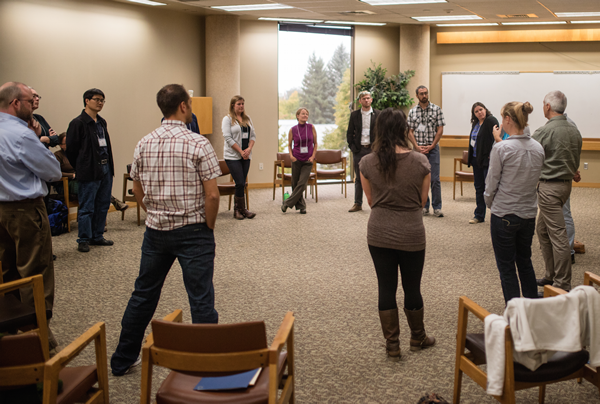
December 6, 2016
Research Awards Build STEM Capacity
Building a scientific community in Utah means reaching a wide variety of citizens and students and giving them the opportunity to join in STEM-oriented research. Many of Utah’s students attend universities throughout the state where the capacity to conduct scientific research is somewhat limited. Professors at these institutions, also called primarily undergraduate institutions (PUls), often have the inclination, but lack time and resources to involve themselves and their students in current science research.
This is why iUTAH, an interdisciplinary research and training program aimed at strengthening science for Utah’s water future, has established a three-tiered approach to funding research awards. For the past four years, we have been working to extend our collaborative culture of multi-institutional research to PUIs across our state. By offering faculty at these institutions the opportunity to apply for traditional research awards, professional development grants, and release time awards, iUTAH is addressing, in a targeted, strategic way, the factors that most limit the participation of PUIs in research.
“As a former PUI faculty member myself, I understand the unique pressures and limitations that come with this environment,” says Andy Leidolf, Assistant Director of iUTAH. “It is tremendously rewarding to be able to provide needed support to leverage the ample talent and enthusiasm for research that exists at these institutions on behalf of our statewide research enterprise.”
In five years, iUTAH has funded over $300,000 towards this effort. This year, researchers at Utah Valley University (UVU), Westminster College, and Weber State University (WSU), will receive over $50,000, up to $20,000 per project, in funding as part of the 2017 iUTAH Research Catalyst Grant (RCG) initiative. Professors McKenzie Skiles, UVU, Frank Black, Westminster College, and Bridget Hilbig, WSU, have each received award funding to work with undergraduates, other faculty members, and with other research institutions, community groups, and professional organizations across the state.
“Looking at our most recent group of PUI awardees teaming up with research faculty, their proposed research is truly cutting edge,” said University of Utah professor and State Program Director of EPSCoR Paul Brooks. “These proposals would be incredibly competitive at any national panel that I have sat on for the National Science Foundation or Department of Energy.”
The project by McKenzie Skiles will look at the constraining physical controls on snow hydrology along the Wasatch Front. It brings together collaborators from each of Utah’s research institutions, including Janice Brahney, Utah State University, Greg Carling, Brigham Young University, and Jim Steenburgh, University of Utah.
Frank Black’s project will expand his earlier work on the Great Salt Lake (GSL) to examine wildfire ash and GSL dust as sources of heavy metals to Utah’s aquatic ecosystems. Collaborators include Greg Carling, Brigham Young University and Evan Glenn, US Forest Service, Uinta-Wasatch-Cache National Forest.
The third RCG awardee, Bridget Hilbig, will focus her work on enhancing soil biological complexity to conserve water in urban agriculture, working with Steven Burian, University of Utah as a collaborator. By better understanding the factors affecting urban ecosystem water-use efficiency, she hopes to improve our ability to predict urban water cycles in Utah. Hilbig also received a professional development grant to attend a Council on Undergraduate Research (CUR) Institute. With this additional training, she aims to “develop an interdisciplinary, multi-institutional research group at WSU that includes undergraduate students learning from, and interacting directly with, graduate students, postdoctoral researchers, and faculty members at their own institution and beyond.”
Among the 15 previous RCG grantees, Jacqualine Grant, an assistant professor of biology and museum curator of the Garth and Jerri Frehner Museum of Natural History at Southern Utah University, is the first to receive a release time award. Grant’s previously funded project involving a demonstration green roof exhibit and associated outreach has reached over 1,800 faculty, undergraduates, and students K-12 since its installation in 2015. In discussing the project’s accomplishments, she said “green infrastructure is an underutilized water-saving practice in southern Utah.” She will use the release time to develop several proposals with colleagues at the University of Utah and Northern Arizona University.
“By having researchers at the PUIs engaging with faculty at the more research-intensive universities, it opens science as a process up to all the PUI students in all those classes,” says Brooks. “And seeing that ability, the light bulb that goes off for those students, it’s not just memorization; it’s not just repeating the knowledge. They learn that they can contribute to something new.”
In addition to these opportunities, iUTAH continues to offer ongoing professional development to its participants through co-sponsoring events such as the Alda Center for Communicating Science held this fall, in partnership with the Offices of the Vice President for Research at Utah State University and the University of Utah. The next collaborative effort will be a Broader Impacts Workshop in March 2017 in partnership with the Vice President for Research office at the University of Utah.
For more how the RCG awards are working to strengthen iUTAH’s collaborative research network, visit the full article…
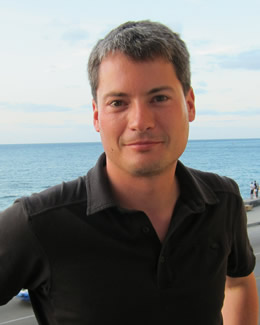
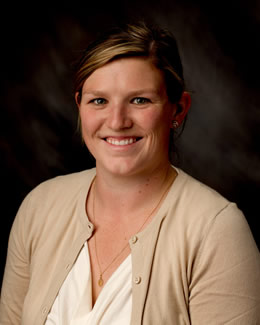
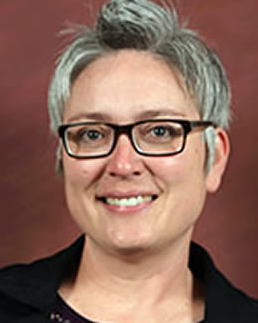
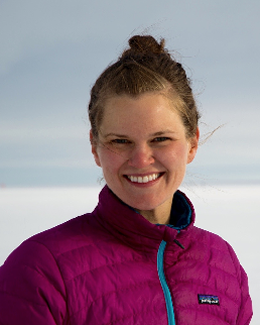
(lower left) Jacqualine Grant, SUU and McKenzie Skiles, UVU
December 6, 2016
Engaging Neighborhoods in Survey Results
Last summer, nearly 400 people on Salt Lake City’s west side were asked about their connections to the Jordan River and the parklands alongside the river. Bilingual surveys were distributed in public places such as grocery stores, libraries, parks, and community events. Students involved in iUTAH Undergraduate Research Fellows (iFellows) Program, Cynthia Elliott and Luis Vidal, conducted the survey using iPads and interacting directly with residents.
Mark Brunson, professor in Utah State University’s Department of Environment and Society and the USU Ecology Center, and Taya Carothers, PhD student at USU, jointly developed the survey. They were aided in this process by collaborators in Salt Lake City’s open space lands program, Lewis Kogan and Tyler Murdock; and the design consultant for the Three Creeks Confluence project.
“As iUTAH’s director of education, outreach, and diversity, I have long wanted to do something that engaged the diverse neighborhoods on Salt Lake City’s west side and could be used to benefit people in those communities,” said Brunson. The idea for the study started at meeting led by Brian Tonetti, the executive director of the Seven Canyons Trust, held in fall 2015. While talking about how the Glendale neighborhood felt about daylighting (freeing buried rivers and streams) that currently run through Salt Lake City, it became clear that getting input from a broad diversity of neighborhood residents was challenging. This seemed like an opportunity to combine Carothers’s research on environmental justice and water with more general questions that might serve a variety of community projects in the area, such as the Glendale project.
After the survey results were collected and data formulated, iUTAH’s cyberinfrastructure team used visualization tools to help make the information accessible and easy to understand. This online tool, the survey data viewer, is publicly available and provides a simple interface to communicate the results of surveys to stakeholders, participants, and the general public. Information on this process can be found here. This information has been useful in presentations to make the results more interesting and applicable to specific groups.
“We found it to be extremely helpful because it is very visual,” said Carothers, who is also an iUTAH Graduate Research Assistant. “As a visual representation, it shows people what the data look like, by the size of the circle as a heat map, and then people can really visualize support or concern about a specific topic.“ It has been used in meetings with neighborhood council groups to show the data and to answer questions. This audience often lacks background information about the survey and mainly wants to know how it relates to them personally. The data viewer allows the presenter to look up answers to the specific area-related questions that people have, and use it as a tool to start a discussion.
“As a researcher who studies human-environment interactions, it’s been fascinating to learn about the different ways that individuals are connected to the Jordan, a very urban river that has a reputation more for impaired water quality than for recreation opportunities,” said Brunson. The link to the data survey has also been sent to specific stakeholders for use in proposal writing for future grants and research. The weed puncture vine, a plant covered with spines sharp enough to flatten bicycle tires, was identified by SLC residents as one of their larger concerns along the river and parkway. In response to this concern, the Open Space Lands program, Natural History Museum of Utah, and Brunson are collaborating on a proposal that could lead to a new citizen science project to address this issue directly.
This project demonstrates the multi-dimensional collaborations and partnerships that iUTAH, an interdisciplinary research and training program aimed at strengthening science for Utah’s water future, fosters in the state.
For downloadable article, along with quick reads version, visit the full article…
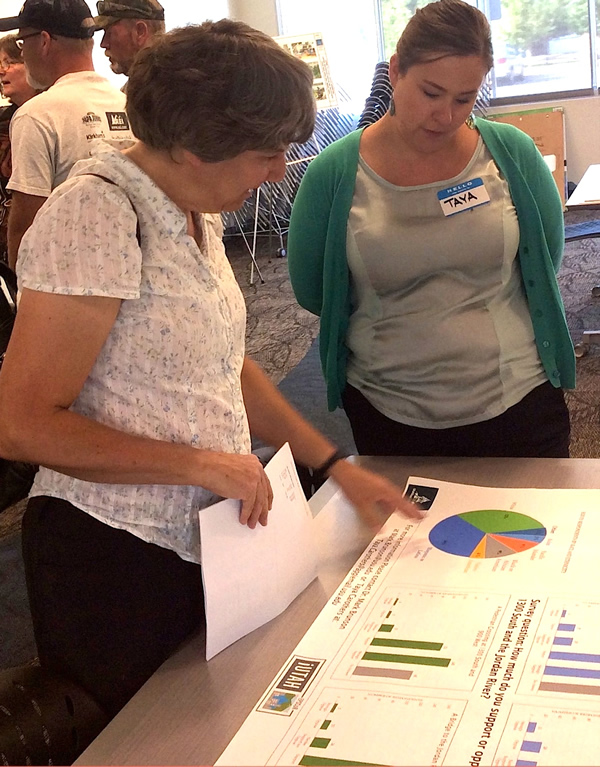
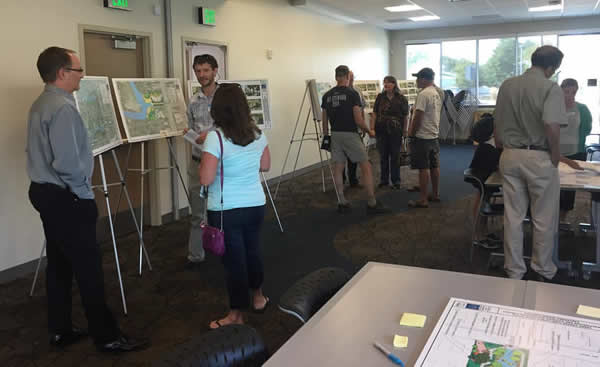
December 6, 2016
Publication Highlights Web-Based Visualizations of Social Science Data
iUTAH’s interdisciplinary approach to research creates interesting challenges and opportunities. One of these challenges involved the development of tools for communicating and disseminating the results of social science surveys. In general, survey data are typically interpreted by researchers and communicated with static reports and figures. Members of iUTAH’s social science and cyberinfrastructure teams wanted to expand this approach and develop an interactive, web-based tool that would make the data available to a wider audience. Innovations in methodology, tools, and approach are featured in the October 2016 edition of the journal Environmental Modelling and Software.
Doug Jackson-Smith, Courtney Flint, and a number of other iUTAH social scientists conducted surveys assessing public attitudes toward water resources in Utah. As the project progressed, a tool was needed to help people visualize and access the results. Amber Jones and Jeff Horsburgh of iUTAH’s cyberinfrastructure team became involved to determine the essential components of the tool. Code was then written by Mauriel Ramirez to create and implement the viewer.
“Most of my past experience has been working with biophysical data,” said Amber Jones, iUTAH data manager and research engineer at Utah State University. “It has been rewarding to work with social scientists and learn about survey data.” The result of this partnership is the survey data viewer, a website that allows direct access to the responses of the 6,000 adults who participated in the iUTAH Utah Water Survey. Questions range from attitudes about local water quality to concerns about environmental conditions. The results can be grouped by home ownership, age, or education level.
“The survey data viewer makes social science data accessible to anyone, and it is interesting to explore patterns in Utahns’ responses,” said Jones. “This collaboration and development wouldn’t have been possible without iUTAH.” Currently, the cyberinfrastructure team is working to apply the tool to additional surveys. This provides a simple interface to communicate the results of surveys to stakeholders, participants, and the general public. One example of how an iUTAH survey is being visualized with the interface and is serving the community can be found here.
Authors of the article include Amber Jones, Jeff Horsburgh, Doug Jackson-Smith, Mauriel Ramirez, Courtney Flint, and Juan Caraballo. The article can be viewed in its entirety under the title A Web-Based, Interactive Visualization Tool For Social Environmental Survey Data.
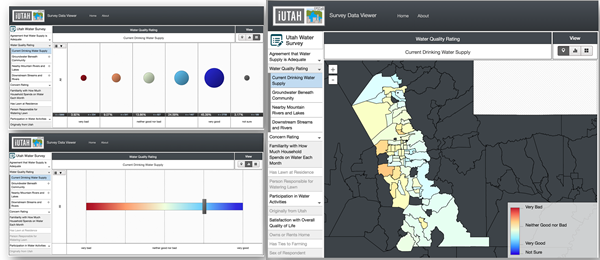
and map of responses related to water supply
December 5, 2016
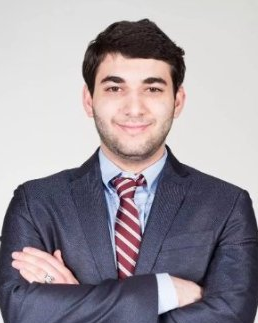
Areg Haytayan, our office assistant, is leaving in mid-December after almost a year and a half with iUTAH. While working as part of the office administration team, Areg handled a diverse portfolio of tasks, including event planning/management, staff/participant travel, and assisting with project outreach activities, such as student and participant tracking. Many of the events iUTAH has hosted over the past year and a half would not have been possible without his hard work and dedication.
We will all miss Areg’s friendly personality, and would like to thank him for his work on the iUTAH project. While we are sad to see him go, we are excited for him to take this next step in his career, and we wish him well in his new endeavors in California.
November 23, 2016
International Cooperation: From Utah to Tyrol
University of Utah and iUTAH researcher David Bowling, was featured on University of Innsbruck website during his recent eight week visit to the university. An excerpt from the website news story said “Bowling spent eight weeks at the Institute of Ecology. The focus was on the joint work on the improvement of measuring instruments used in the investigation of the carbon cycle. The data are of great importance for climate change forecasts.”
"We are concerned with how organisms are influenced by biological, physical and chemical factors in their natural habitats - and how these organisms in turn react to their environment," explains Bowling. "It is particularly important to understand which processes influence the metabolism of carbon, water or other nutrients."
Press: University of Innsbruck Newsroom



